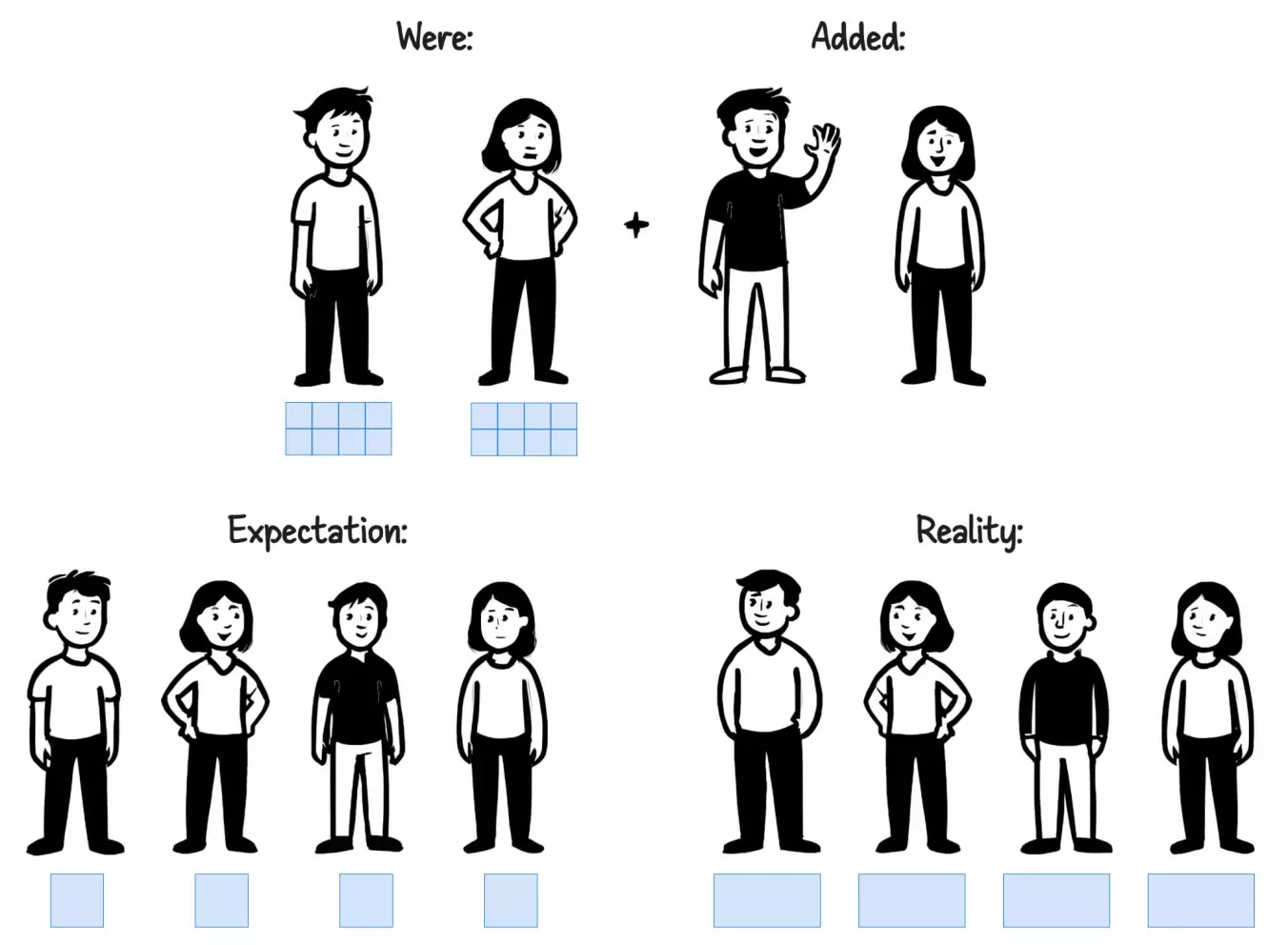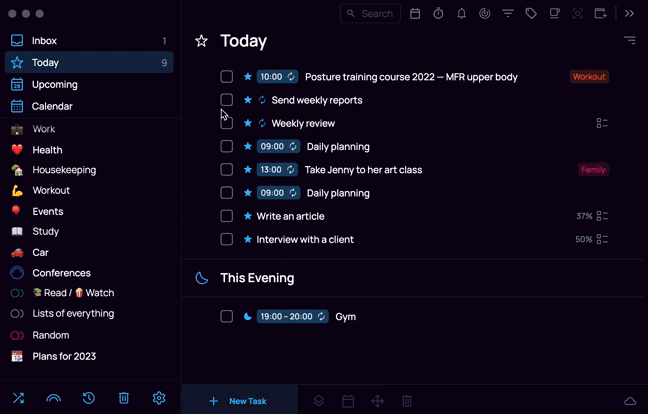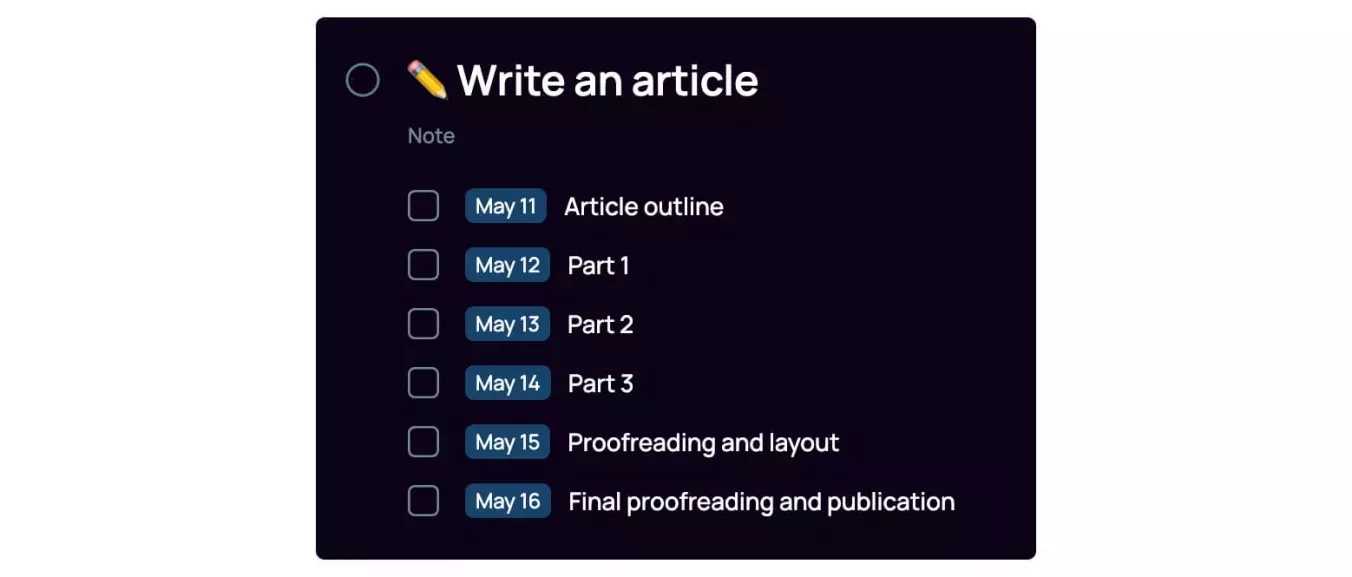Does the report take you 45 minutes? Allocate an hour for it. Does the report take you four days? Allocate a week for this work. Such time banks protect you against unpleasant surprises and help you get the task done in time.
Ironically, this quite reasonable approach is the common cause of low productivity. In this article, we explain what Parkinson’s Law is and how it affects our time management.
What is the point of Parkinson’s law?
Parkinson’s Law is a satirical rule that states:
The author of the law was the British historian and writer Cyril Northcote Parkinson. In 1955, he published a satirical pamphlet against bureaucracy in The Economist. According to Parkinson, this law («work complicates to fill the available time») leads to the continuous growth of bureaucracy.
The article soon became popular all over the world. The rule stated in it has since been called «Parkinson’s law» or «Parkinson’s first law». The author of the article later wrote a book on this topic, in which he also described other laws of development of modern organizations.
The article soon became popular all over the world. The rule stated in it has since been called «Parkinson’s law» or «Parkinson’s first law». The author of the article later wrote a book on this topic, in which he also described other laws of development of modern organizations.
Simply put, it takes us as much time to complete a task as we allocate for it.
Example 1
It takes a person half an hour to clean his apartment every day. This is enough time for him to keep the apartment tidy. However, if he allocates an hour for cleaning, it is highly likely that this is how long cleaning will take this time.
Example 2
A department has two managers who struggle to cope with their duties. To make their lives easier, the company hires two more people for the department. Theoretically, the workload of each employee should be halved. In fact, it doesn’t happen: managers are still busy all day long.

How does the law work in time management and why do we «follow» it
Parkinson’s Law is relevant not only for organizations, but also for personal time management.
Here are some typical situations in which it can be encountered:
Schedule. The more time is allotted to a task, the longer it takes to complete it. Let’s assume that a manager needs one hour to write a report. If she allocates two hours for it, she will probably spend that whole time on it. Such a wide margin lets distractions, slow work, and perfectionism sneak in.
Deadline. The more time before the deadline, the slower the work on the project goes. Here’s a classic example: if a freelancer has a week to complete a task, he will only actually start on the last day.
Workday. The workday will always be busy, no matter how long it is. Tested and proven: if a good employee is given six hours to do a standard day’s work instead of eight, he will do it without any loss in quality.
The amount of time spent indicates quality: the first pitfall in Parkinson’s Law
In essence, the first pitfall in Parkinson’s Law is that people tend to evaluate their own and the work of others through the time spent.
Simply put, we tend to think:
- Worked 10 hours? Amazing!
- Worked 6 hours? Well, okay.
- Worked 2 hours? What is this garbage?
The more time spent on a task, the more «serious» and valued it is. For example, if a mechanic spends five hours repairing a car and charges 5,000 rubles for the work, we will pay him without much of a second thought. However, if he finishes everything in a few minutes and asks for the same amount, we will naturally feel resentful.
Punished with work: the second pitfall in Parkinson’s Law
The second pitfall in Parkinson’s Law goes like this: if we complete a task ahead of schedule, instead of getting rewarded, we get more work.
Instead of any recognition, we will be punished with a heavier workload. This is especially noticeable in organizations where high productivity brings greater responsibilities for the same remuneration.
The pitfalls in Parkinson’s Law cause one to unconsciously procrastinate, making work slower. «Why rush,» he thinks.
- If I work a lot, I am a good person (pitfall #1).
- If I finish early, I’ll just get a heavier workload straight away (pitfall #2).
The pitfalls in Parkinson’s Law can significantly undermine our lives. It means we work at an unreasonably slow pace. Because of this, we do not achieve the results we could have. Work drags on and eats into time meant for rest, leisure, and family.
How to overcome Parkinson’s Law?
The good news is that we can, if not totally overcome Parkinson’s first law, at least mitigate its negative effects. However, to do so, we have to radically change our approach to time management. here are a few recommendations:
Reward yourself for being productive
This strategy will change your attitude toward work. You gradually lose the urge to procrastinate and become motivated to get things done faster.
If you finish a task, a series of tasks, or a significant project ahead of schedule, don’t start on the next one immediately. Take at least a short break: go for a walk, have a coffee, or do something else enjoyable. If you use time management apps, pick one that offers you encouragement when you complete a task. Singularity.app, for example, has animated «praise bars.»

If you’ve accomplished everything in your plan for the day, don’t set out new tasks, but just stop working. A well-deserved rest at the end of the day is one of our strongest sources of motivation.
Place value on results more than on time
Set goals based on your desired result, not on the time spent.
Let’s say you are writing a book or a term paper. You can schedule work on the text each day in two ways:
- Based on time «Write my book for 2 hours».
- Based on results «Write 500 words».
In the first method of planning, you become tempted to imitate real work in a myriad ways. This should come as no surprise: if for the allotted two hours you write only two sentences, formally speaking, you have met your goal.
With the second method of planning, there is no such temptation: until the goal is fulfilled, you have no right to say you’re done. It doesn’t matter how long the work takes, two hours or 15 minutes.
Such a strategy can be found for most tasks.
Consider the following:

Set limits for endless tasks
A task like «going to the store» is considered done once you’ve bought all your groceries.
To prevent such tasks from dragging on, it can be useful to set a time budget for them from the start. You can set the budget directly in the wording of the:

Reduce the time you spend on tasks
Try to find out if you have any tasks that Parkinson’s law has impacted. Here is a helpful trick: try to reduce the time you spend on standard tasks by just a little bit.
For example, if it usually takes you an hour to write a blog post, try scheduling 45 minutes for it. Use a timer and try to stick to that time.
This way, you can test your work for the impact of Parkinson’s Law and see how efficiently you had been doing the task prior.
Set interim deadlines
Try to set deadlines for each stage of a major task. This technique will keep your project from dragging on because it forces you to distribute your efforts evenly.
Let’s say you need to write an article in a week. This is roughly what the work plan would look like in you time manager:

Set aside time for rest
It is hugely beneficial to set for yourself a strict cut-off time after which you will stop absolutely all work. it will serve as a kind of «fuse» that will help you avoid overworking. Keep Parkinson’s law in mind, «work takes up all the time allotted for it».
Rest can be planned as a habitual task

You can also use the Pomodoro method, which has all your rest intervals built right in.
To automate your planning, try doing things in a time management app rather than on paper. In SingularityApp, you can set a strict time limit for any task, easily record its start time and deadlines, rigidly schedule individual milestones, and add reminders about them.
Try SingularityApp for free →





